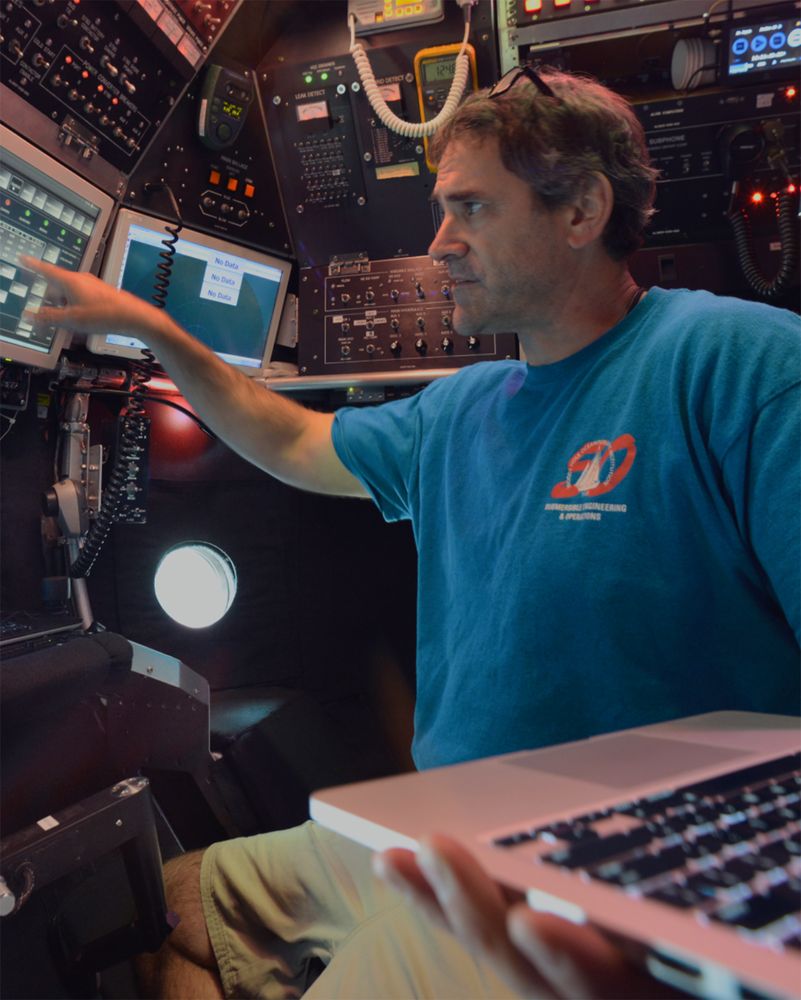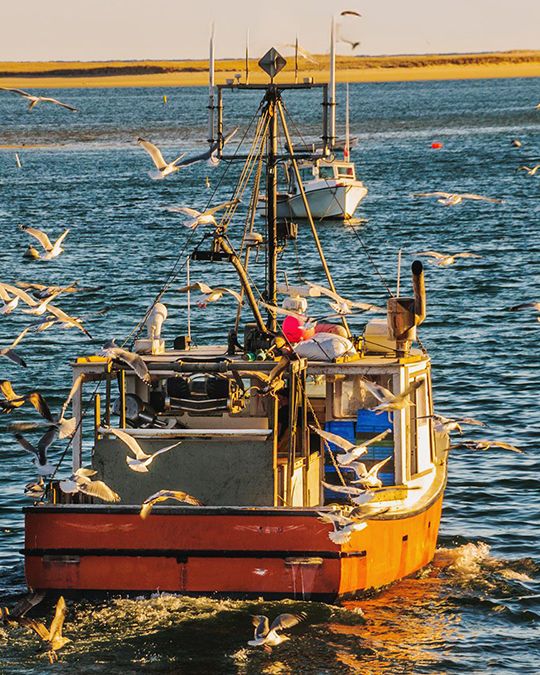
Now through December 1, take 20% OFF everything in our store!
Don't miss out! Find the perfect gift while supporting ocean science: go.whoi.edu/holiday25



Now through December 1, take 20% OFF everything in our store!
Don't miss out! Find the perfect gift while supporting ocean science: go.whoi.edu/holiday25
👉🏾Get our full report—and find out why COP31 could be the first #BlueCOP ever: go.whoi.edu/cop30-wrap
👉🏾Get our full report—and find out why COP31 could be the first #BlueCOP ever: go.whoi.edu/cop30-wrap
📲Watch the 4-part series, produced by @seagrant.whoi.edu with the Mashpee Wampanoag Tribe: go.whoi.edu/sustaining-communities
📲Watch the 4-part series, produced by @seagrant.whoi.edu with the Mashpee Wampanoag Tribe: go.whoi.edu/sustaining-communities
📲Get to know our amazing ocean planet through our new science interactive: http://go.whoi.edu/ocean-world
📲Get to know our amazing ocean planet through our new science interactive: http://go.whoi.edu/ocean-world
During a 2016 expedition aboard the research vessel Atlantis, WHOI engineer Justin Fujii embellished our underwater robot Sentry with electrical tape to resemble a turkey.
How do you celebrate holidays when you can't be with family or friends?

During a 2016 expedition aboard the research vessel Atlantis, WHOI engineer Justin Fujii embellished our underwater robot Sentry with electrical tape to resemble a turkey.
How do you celebrate holidays when you can't be with family or friends?
#WHOI & New England Aquarium scientists remotely captured blowhole spray from North Atlantic right whales in Cape Cod Bay to learn more about their health—without invading their space!
📲Learn more from BBC: go.whoi.edu/bbc-whale



#WHOI & New England Aquarium scientists remotely captured blowhole spray from North Atlantic right whales in Cape Cod Bay to learn more about their health—without invading their space!
📲Learn more from BBC: go.whoi.edu/bbc-whale
Find out through the WHOI Ocean Learning Hub: go.whoi.edu/plastic

Find out through the WHOI Ocean Learning Hub: go.whoi.edu/plastic
Bruce Strickrott, lead pilot of the WHOI-operated deep-sea sub Alvin, was recently featured in a new Apple ad highlighting the power of curiosity, ideas, and exploration.
Go behind the scenes with Apple’s spotlight: go.whoi.edu/apple

Bruce Strickrott, lead pilot of the WHOI-operated deep-sea sub Alvin, was recently featured in a new Apple ad highlighting the power of curiosity, ideas, and exploration.
Go behind the scenes with Apple’s spotlight: go.whoi.edu/apple
It's not in the Great Barrier Reef! It's actually Laloniasi, a 300-year-old coral (Pavona clavus) measuring the size of two basketball courts in the Solomon Islands.
👉Find out why our #ReefSolutions team is studying it: go.whoi.edu/megacoral

It's not in the Great Barrier Reef! It's actually Laloniasi, a 300-year-old coral (Pavona clavus) measuring the size of two basketball courts in the Solomon Islands.
👉Find out why our #ReefSolutions team is studying it: go.whoi.edu/megacoral
👉Get the backstory on this collaboration—and how our researchers are restoring reef ecosystems through sound: go.whoi.edu/oceanmusic
👉Get the backstory on this collaboration—and how our researchers are restoring reef ecosystems through sound: go.whoi.edu/oceanmusic
👉🏽Explore our planet as you never have before: go.whoi.edu/ocean-world
👉🏽Explore our planet as you never have before: go.whoi.edu/ocean-world
For the past four years, working with @scrippsocean.bsky.social and partners around the world, we've brought the #OceanPavilion to the UN's annual climate talks—creating a hub for ocean-based #climatesolutions!
For the past four years, working with @scrippsocean.bsky.social and partners around the world, we've brought the #OceanPavilion to the UN's annual climate talks—creating a hub for ocean-based #climatesolutions!
What informal tools do you use to measure in a pinch? 🤔



What informal tools do you use to measure in a pinch? 🤔
This Oceanus special edition explores breakthroughs in ocean science + technology that unlock new possibilities for ocean, our planet, and our future.
👉Supplies are limited— get yours today: explore.whoi.edu/oceanus-giveaway-its-an-ocean-world

This Oceanus special edition explores breakthroughs in ocean science + technology that unlock new possibilities for ocean, our planet, and our future.
👉Supplies are limited— get yours today: explore.whoi.edu/oceanus-giveaway-its-an-ocean-world
Carolyn Tepolt says invasive European green crabs are adapting to colder waters, which could spell chaos for vulnerable coastal ecosystems.
📲Find out how communities are eradicating these invaders from the @alaskabeacon.com: go.whoi.edu/ab-crab

Carolyn Tepolt says invasive European green crabs are adapting to colder waters, which could spell chaos for vulnerable coastal ecosystems.
📲Find out how communities are eradicating these invaders from the @alaskabeacon.com: go.whoi.edu/ab-crab
🌊📜🤝
👉🏽Find out how we’ve been pushing for this recognition all year—and what’s been happening at the #OceanPavilion this week: go.whoi.edu/cop30-week1



🌊📜🤝
👉🏽Find out how we’ve been pushing for this recognition all year—and what’s been happening at the #OceanPavilion this week: go.whoi.edu/cop30-week1
#fulbrightscholar




#fulbrightscholar
@whoi.edu @cop30brazil.bsky.social
@whoi.edu @cop30brazil.bsky.social
Our new Future Fishery Alliance provides tech and data that help fishermen adapt, increasing profit and efficiency, while reducing bycatch.
Learn more: go.whoi.edu/fisheryalliance



Our new Future Fishery Alliance provides tech and data that help fishermen adapt, increasing profit and efficiency, while reducing bycatch.
Learn more: go.whoi.edu/fisheryalliance
Webb is best known as the inventor of the underwater glider, an autonomous vehicle that navigates the ocean by adjusting its internal buoyancy.
Learn more about this ocean pioneer: go.whoi.edu/webb


Webb is best known as the inventor of the underwater glider, an autonomous vehicle that navigates the ocean by adjusting its internal buoyancy.
Learn more about this ocean pioneer: go.whoi.edu/webb
📲Pop into the research at @iflscience.com: go.whoi.edu/ifl-ice

📲Pop into the research at @iflscience.com: go.whoi.edu/ifl-ice
📲Learn more: go.whoi.edu/cct-alvinshome

📲Learn more: go.whoi.edu/cct-alvinshome
📲 Find out what this historic mission means for the future of ocean research from the @bostonglobe.com: go.whoi.edu/redwing


📲 Find out what this historic mission means for the future of ocean research from the @bostonglobe.com: go.whoi.edu/redwing
📲Learn more: go.whoi.edu/breath
📲Learn more: go.whoi.edu/breath
Leave your best guess in the comments 👇
🏄🏻Explore more wonders of our ocean planet through our new web interactive: go.whoi.edu/ocean-world
#ItsAnOceanWorld

Leave your best guess in the comments 👇
🏄🏻Explore more wonders of our ocean planet through our new web interactive: go.whoi.edu/ocean-world
#ItsAnOceanWorld

